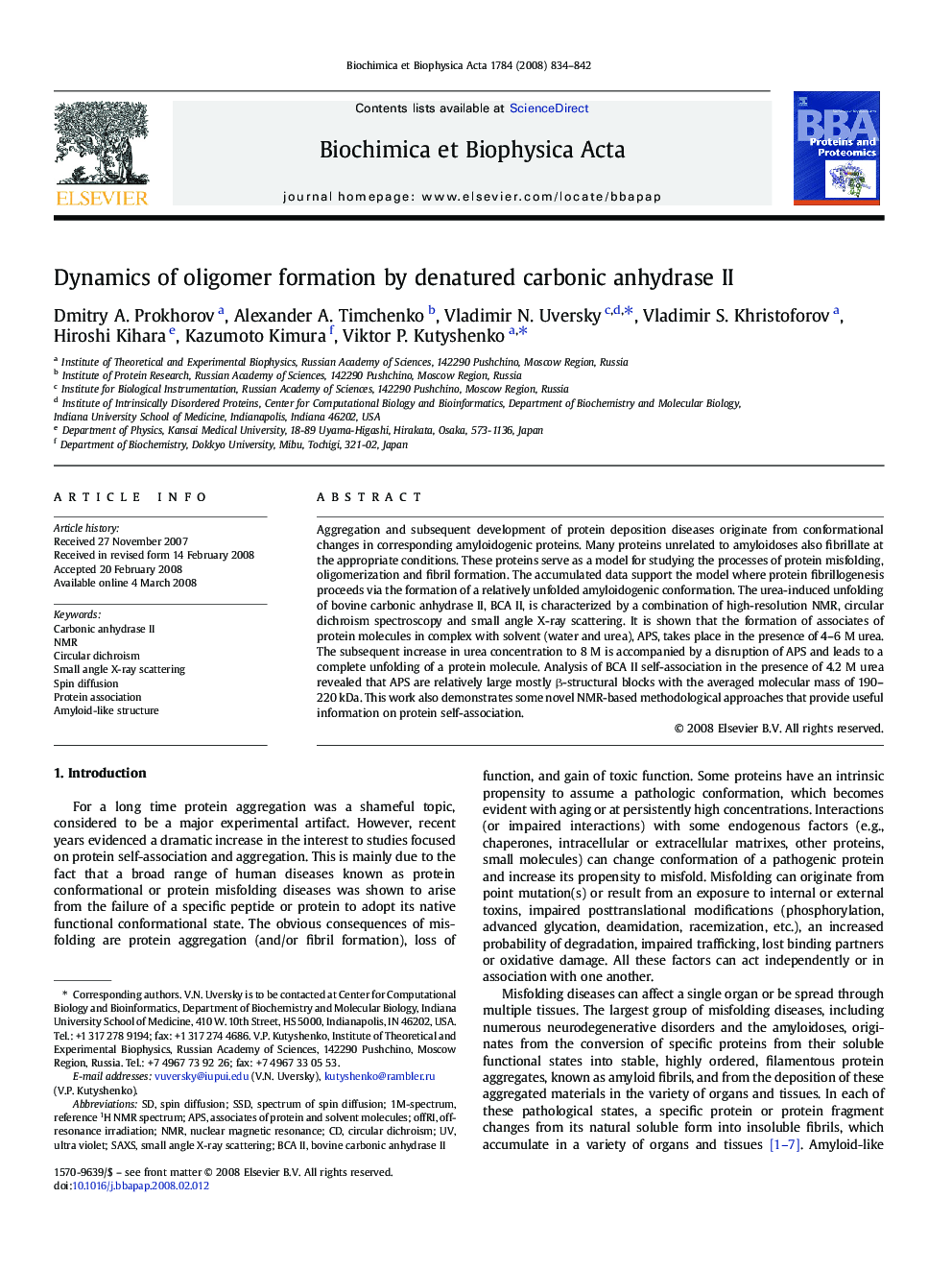| Article ID | Journal | Published Year | Pages | File Type |
|---|---|---|---|---|
| 1178321 | Biochimica et Biophysica Acta (BBA) - Proteins and Proteomics | 2008 | 9 Pages |
Aggregation and subsequent development of protein deposition diseases originate from conformational changes in corresponding amyloidogenic proteins. Many proteins unrelated to amyloidoses also fibrillate at the appropriate conditions. These proteins serve as a model for studying the processes of protein misfolding, oligomerization and fibril formation. The accumulated data support the model where protein fibrillogenesis proceeds via the formation of a relatively unfolded amyloidogenic conformation. The urea-induced unfolding of bovine carbonic anhydrase II, BCA II, is characterized by a combination of high-resolution NMR, circular dichroism spectroscopy and small angle X-ray scattering. It is shown that the formation of associates of protein molecules in complex with solvent (water and urea), APS, takes place in the presence of 4–6 M urea. The subsequent increase in urea concentration to 8 M is accompanied by a disruption of APS and leads to a complete unfolding of a protein molecule. Analysis of BCA II self-association in the presence of 4.2 M urea revealed that APS are relatively large mostly β-structural blocks with the averaged molecular mass of 190–220 kDa. This work also demonstrates some novel NMR-based methodological approaches that provide useful information on protein self-association.
